Podcast: Play in new window | Download
Subscribe: Apple Podcasts | RSS
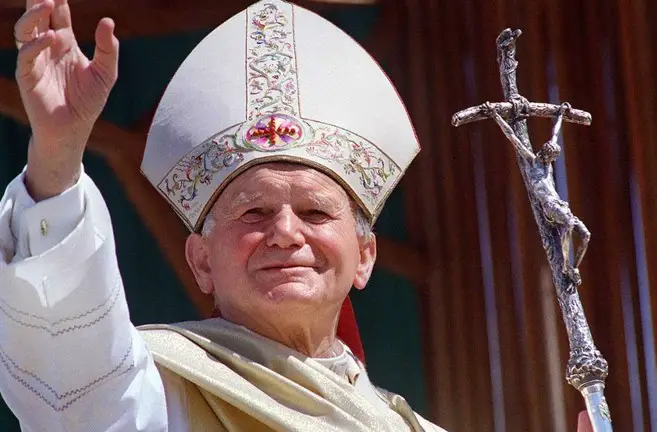 On a buying trip to Mexico for my business in May of 2000 I noticed posters and banners all over Guadalajara with the faces of Mexicans who were about to become saints. The pope – now saint – John Paul II was soon to visit Mexico to participate in the formal canonization ceremonies. As a gringo, I was unaware of what was going on. I just kept seeing these posters wherever I went. I asked a business associate of mine down there, Juan, who these people were and why I was seeing their images everywhere.
On a buying trip to Mexico for my business in May of 2000 I noticed posters and banners all over Guadalajara with the faces of Mexicans who were about to become saints. The pope – now saint – John Paul II was soon to visit Mexico to participate in the formal canonization ceremonies. As a gringo, I was unaware of what was going on. I just kept seeing these posters wherever I went. I asked a business associate of mine down there, Juan, who these people were and why I was seeing their images everywhere.
“Yes, the pope is coming to Mexico to make these people saints,” Juan said to me in English, and looking at me with a serious expression on his face. “This is important to Mexicans. This is a big deal to us.”
I paid little attention to this back then, but later realized I was in Mexico right before a historic moment. Their beloved pontiff would come, and the country would soon erupt into a series of celebrations that would make people proud to be Mexican. Among the saints canonized in May of 2000 are two that many have never heard of before.
José María Yermo y Parres
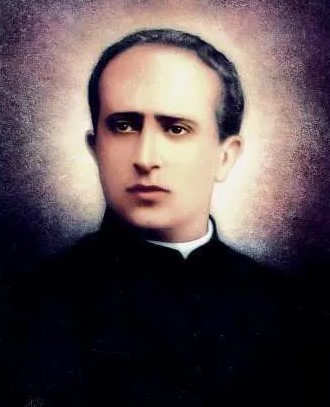 The first of the “little-known saints” was named José María Yermo y Parres. Born on November 10, 1851, to a wealthy family on an enormous hacienda outside of Mexico City, the life of José María de Yermo y Parres was marked by an unwavering dedication to social reform, particularly in the areas of education and charity. Throughout his life he served as a tireless advocate for the marginalized and neglected. Both his parents hailed from minor noble houses in Spain and came from immense wealth going back generations. It was José María de Yermo y Parres’ birth into a privileged and devout Catholic family that laid the foundation for his deep religious faith and social consciousness. After the untimely death of his mother, young José was sent to live with his aunt and grandmother. His upbringing instilled in him a strong sense of empathy and a genuine desire to help those in need. Early in his life, he displayed an aptitude for intellectual pursuits and a profound dedication to social justice.
The first of the “little-known saints” was named José María Yermo y Parres. Born on November 10, 1851, to a wealthy family on an enormous hacienda outside of Mexico City, the life of José María de Yermo y Parres was marked by an unwavering dedication to social reform, particularly in the areas of education and charity. Throughout his life he served as a tireless advocate for the marginalized and neglected. Both his parents hailed from minor noble houses in Spain and came from immense wealth going back generations. It was José María de Yermo y Parres’ birth into a privileged and devout Catholic family that laid the foundation for his deep religious faith and social consciousness. After the untimely death of his mother, young José was sent to live with his aunt and grandmother. His upbringing instilled in him a strong sense of empathy and a genuine desire to help those in need. Early in his life, he displayed an aptitude for intellectual pursuits and a profound dedication to social justice.
At the age of 17, Yermo decided to pursue his religious vocation by entering a religious order called the Congregation of the Mission. After years of rigorous theological training and spiritual reflection, he made his vows to the order in 1868. Yermo’s superiors decided to send him to the order’s headquarters in Paris where he served until 1870. When he returned to Mexico, the young José Yermo had a crisis of faith and decided to leave religious life. By the end of the decade, he resolved his crisis and on August 24, 1879, he was ordained a priest. After his ordination, Yermo was assigned to two small rural churches where he witnessed immense poverty and misery. This affected him profoundly. So, Yermo’s ministry from the very beginning was marked by a sincere commitment to the welfare of the less fortunate. By 1885, he organized “The Shelter of the Sacred Heart,” a service organization to help the poorest of the poor and would serve as the foundation for his later endeavors.
José María de Yermo y Parres’s most enduring and impactful contribution was the establishment of the Congregation of the Servants of the Sacred Heart of Jesus and of the Poor, often referred to as the Yermo Sisters. In 1900, Yermo formally founded this religious congregation with the central mission of providing care and education to impoverished and vulnerable populations, particularly orphaned children. Under Yermo’s visionary leadership, the Yermo Sisters became widely recognized for their dedication to serving the poor and marginalized. They established orphanages, schools, and homes for those in need, providing not only education but also spiritual and emotional support to countless individuals. José María de Yermo y Parres’s commitment to education was at the core of his mission. He fervently believed that access to quality education was fundamental for the development and upliftment of individuals and communities. Through the Yermo Sisters and the institutions they established, he worked tirelessly to ensure that underprivileged children had the opportunity to receive an education and build a brighter future. Yermo’s vision of education transcended mere academic instruction; it encompassed the moral and spiritual development of students. His institutions sought to instill values, character, and a sense of purpose in the young minds they nurtured.
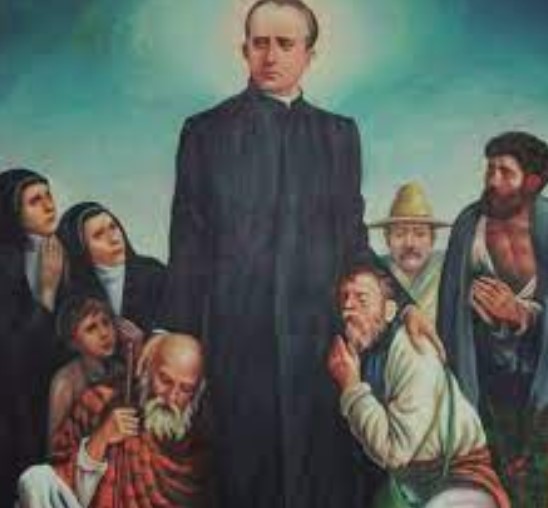 Yermo’s philanthropic and social advocacy efforts extended beyond education. He founded homes for the elderly and cared for those who were sick and suffering. His approach was holistic, recognizing the importance of addressing not only the material needs but also the spiritual and emotional well-being of individuals in distress. The Congregation of the Servants of the Sacred Heart of Jesus and of the Poor, under his guidance, became known for their selfless and compassionate work among society’s most vulnerable. Yermo’s advocacy for the poor and marginalized was rooted not only in his strong Catholic faith but also in his unwavering belief in the dignity of every human being.
Yermo’s philanthropic and social advocacy efforts extended beyond education. He founded homes for the elderly and cared for those who were sick and suffering. His approach was holistic, recognizing the importance of addressing not only the material needs but also the spiritual and emotional well-being of individuals in distress. The Congregation of the Servants of the Sacred Heart of Jesus and of the Poor, under his guidance, became known for their selfless and compassionate work among society’s most vulnerable. Yermo’s advocacy for the poor and marginalized was rooted not only in his strong Catholic faith but also in his unwavering belief in the dignity of every human being.
Yermo’s path was not without its challenges. The social and political landscape of Mexico during his lifetime was marked by turbulence and change. He did most of his work in the final decades of the Porfiriato, the long dictatorship of Mexican president Porfirio Díaz whose long regime sowed the seeds for the Mexican Revolution which Yermo would not live long enough to see. In one of his last acts before he died, Yermo took a group of clergy and lay people on a mission to the Tarahumara people of the northern mountains of Mexico. Yermo passed away on September 20, 1904, a month and a half before his 53rd birthday in the city of Puebla. The notoriety of his holiness spread quickly among the faithful people of Mexico who turned to him asking for his intercession. Consequently, after his death, many miracles were attributed to him.
José María de Yermo y Parres’s contributions did not go unnoticed. His dedication to education, charity, and the well-being of the poor earned him the admiration of many, both within and outside the Catholic Church. His virtuous life and selfless service were officially recognized when he was beatified by Pope John Paul II on May 6, 1990. This was a significant step toward his eventual canonization as a saint. On May 21, 2000, Pope John Paul II made José María de Yermo y Parres a saint of the Catholic Church. His canonization recognized the exemplary life of a man who dedicated himself to serving the less fortunate and upholding the values of compassion, education, and faith.
María Natividad Venegas de la Torre
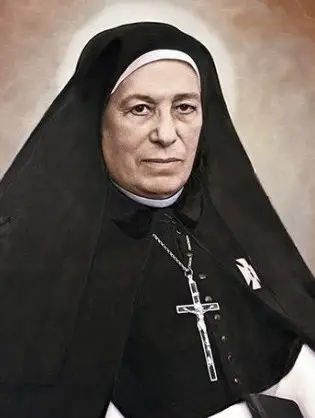 The second little-known Mexican saint is María Natividad Venegas de la Torre, and she is now known as the patroness of Mexican nurses. María Natividad was born on September 8, 1868 in Zapoltanejo, Jalisco, one of 12 children. Her parents were religious to such a degree that her father gave up his studies to become a lawyer because he claimed it conflicted with his faith. At 16 young María lost her mother, at 19 her father also died and so she went to live with an aunt. It was during this time when the idea of consecrating herself completely to Christ in a religious order began to take root in her. This decision she pondered for the next 18 years, when a course of spiritual exercises clarified her ideas.
The second little-known Mexican saint is María Natividad Venegas de la Torre, and she is now known as the patroness of Mexican nurses. María Natividad was born on September 8, 1868 in Zapoltanejo, Jalisco, one of 12 children. Her parents were religious to such a degree that her father gave up his studies to become a lawyer because he claimed it conflicted with his faith. At 16 young María lost her mother, at 19 her father also died and so she went to live with an aunt. It was during this time when the idea of consecrating herself completely to Christ in a religious order began to take root in her. This decision she pondered for the next 18 years, when a course of spiritual exercises clarified her ideas.
She wanted to consecrate herself to God but not, as others had advised her, in a congregation of contemplative life. She preferred not to shut herself off from the world in a cloister, so she chose to join the “Daughters of the Sacred Heart”, a community of pious women who had been running a small hospital for the poor in Guadalajara for more than twenty years. At the time María joined at the age of 37, it was not a real religious congregation, but a lay association recognized by the Church, which was waiting for someone to lead them. María Natividad immersed herself in assisting the poor and sick for 16 years, accepting the various roles assigned to her up to that of Superior. A few months after her election, the diocesan bishop himself suggested that she write the Constitutions for an authentic religious community which could then be approved as an official Congregation.
In three years, María managed to make the Religious Congregation of the Daughters of the Sacred Heart take shape and was elected as Superior General of her new order on January 25, 1921. The congregation helped tens of thousands of the sick and injured and continued serving people throughout the Cristero Rebellion or La Cristiada, which lasted between 1926 and 1929 and pitted Catholic lay people and clergymen against the forces of the anti-Catholic, anti-clerical central government in Mexico City headed by President Plutarco Calles. Calles sought to enforce the anti-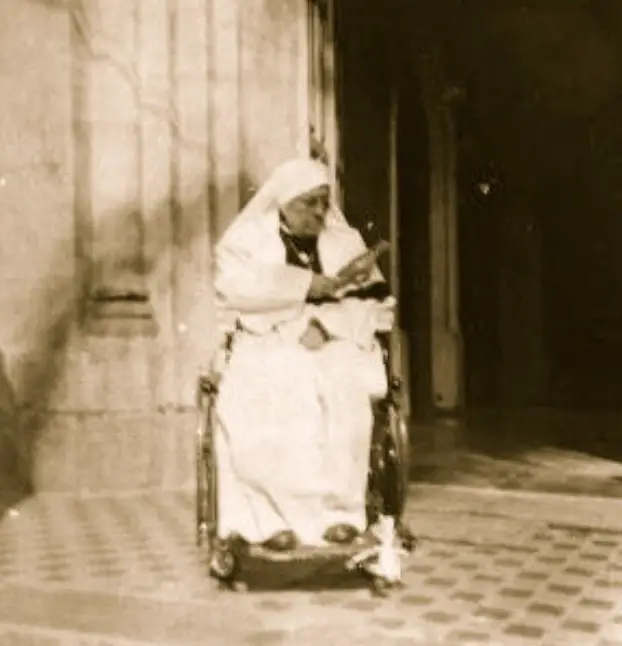 clerical articles of the new Constitution of 1917. Under these laws restrictions were placed on the Catholic clergy and the power of the Church was further limited. Popular religious celebrations were suppressed in local communities along with the number of priests allowed to serve in Mexico as a whole. Consequently, María and the Daughters of the Sacred Heart gave up wearing the nun’s habit and dressed as modest laypeople, but continued their hospital work unabated. A few uprisings happened in 1926 and full-scale violence ensued by 1927, most notably in the countryside of the states of Zacatecas, Jalisco and Michoacán. Most clergy did not take part in violence, although many defied the authorities and continued performing Catholic rites. The Church hierarchy in Mexico tacitly supported the grassroots rebellion and the authorities in Rome condemned the Mexican government. During the Cristero Rebellion, María opened her hospital to the differing factions of the conflict. When the conflict ended, the Daughters of the Sacred Heart continued its mission to help the underserved and expanded its ministries. While head of this order, many people regarded María as a saintly or holy figure, and some claimed her mere presence had a calming healing quality on her patients.
clerical articles of the new Constitution of 1917. Under these laws restrictions were placed on the Catholic clergy and the power of the Church was further limited. Popular religious celebrations were suppressed in local communities along with the number of priests allowed to serve in Mexico as a whole. Consequently, María and the Daughters of the Sacred Heart gave up wearing the nun’s habit and dressed as modest laypeople, but continued their hospital work unabated. A few uprisings happened in 1926 and full-scale violence ensued by 1927, most notably in the countryside of the states of Zacatecas, Jalisco and Michoacán. Most clergy did not take part in violence, although many defied the authorities and continued performing Catholic rites. The Church hierarchy in Mexico tacitly supported the grassroots rebellion and the authorities in Rome condemned the Mexican government. During the Cristero Rebellion, María opened her hospital to the differing factions of the conflict. When the conflict ended, the Daughters of the Sacred Heart continued its mission to help the underserved and expanded its ministries. While head of this order, many people regarded María as a saintly or holy figure, and some claimed her mere presence had a calming healing quality on her patients.
Since its original founding, the Daughters of the Sacred Heart has expanded its network of hospitals and clinics to take care of poor, sick, and elderly people in Guatemala, Honduras and, more recently, also in Africa. María, smiling and simple, led the new Congregation until 1954, when she passed the baton to the new superior, and retreated to a slower pace due to illness. She spent her last years amid great physical suffering, passing away peacefully at the age of ninety on July 30, 1959.
After proclaiming that María Natividad lived a life of “heroic virtue,” Pope John Paul II beatified her on November 22, 1992, and made her Mexico’s first female saint on May 21, 2000.
